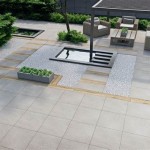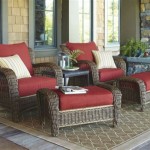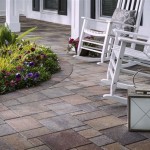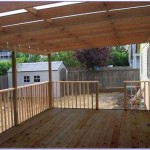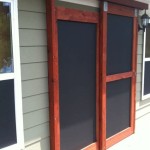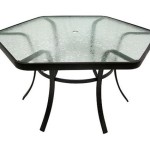Choosing The Right Sliding Patio Door Rollers Replacements
Sliding patio doors offer a seamless transition between indoor and outdoor spaces, providing natural light and convenient access. However, the smooth operation of these doors relies heavily on their rollers. Over time, these components can wear out, leading to difficulty in opening and closing the door. Identifying when a roller replacement is necessary and selecting the appropriate replacement rollers are crucial steps in maintaining the functionality and longevity of a sliding patio door.
This article provides a comprehensive guide to understanding the various aspects of sliding patio door roller replacements. From recognizing the signs of worn rollers to navigating the different types and specifications available, this resource aims to equip homeowners and professionals with the knowledge necessary to make informed decisions regarding replacements.
A well-functioning sliding patio door enhances both the aesthetic appeal and practical usability of a home. By understanding the importance of rollers and proactively addressing issues, it is possible to maintain the smooth operation and extend the lifespan of these valuable features.
Identifying the Need for Roller Replacement
Recognizing the symptoms of worn or damaged rollers is the first step in addressing sliding patio door issues. Ignoring these warning signs can lead to further damage to the door frame, track, or even the glass panel, potentially resulting in more costly repairs. Several key indicators suggest the need for roller replacement.
One of the most common signs is difficulty in opening and closing the door. If the door requires excessive force to move or exhibits a jerky, uneven motion, the rollers are likely worn or corroded. This increased friction can also manifest as a grinding or scraping sound during operation.
Another indicator is the door dragging or sticking in certain spots along the track. This often indicates that one or more rollers are no longer rolling smoothly, causing the door to bind against the frame or track. Visual inspection of the rollers may reveal signs of damage, such as flat spots, cracks, or excessive wear.
Furthermore, a door that is noticeably sagging or uneven may also point to worn rollers. The rollers are responsible for supporting the weight of the door, and when they fail, the door can shift out of alignment. This misalignment can create gaps between the door and the frame, leading to drafts, water leaks, and increased energy consumption.
In some cases, the problem might not be immediately apparent until the door is removed from the track for inspection. Upon removal, the rollers may exhibit significant damage, such as broken bearings, deformed wheels, or excessive buildup of dirt and debris. Thorough cleaning and lubrication might temporarily alleviate the issue, but ultimately, replacement is often the most effective long-term solution.
Ignoring these symptoms can lead to more significant problems. For instance, forcing a door with worn rollers can damage the track, requiring costly repairs or even replacement of the entire door assembly. It is therefore essential to address roller issues promptly to prevent further damage and maintain the optimal performance of the sliding patio door.
Types of Sliding Patio Door Rollers
The market offers a variety of sliding patio door rollers, each designed with specific features and materials to suit different door types and operational requirements. Understanding the different types of rollers is crucial for selecting the appropriate replacement.
One common type is the tandem roller, which features two wheels per roller assembly. Tandem rollers are designed to distribute the weight of the door more evenly, making them suitable for heavier doors or doors with frequent use. The dual-wheel design also provides increased stability and smoother operation.
Single-wheel rollers, on the other hand, feature a single wheel per roller assembly. These rollers are typically used for lighter doors or doors with less frequent use. While they may be less expensive than tandem rollers, they may not offer the same level of durability or weight-bearing capacity.
The material of the roller wheel is another important consideration. Common materials include nylon, steel, and polyurethane. Nylon rollers are generally quieter and smoother than steel rollers, but they may not be as durable or able to withstand heavy loads. Steel rollers are more robust and can handle heavier doors, but they may be noisier and require more frequent lubrication.
Polyurethane rollers offer a good balance between durability and quiet operation. They are resistant to wear and tear and can provide a smooth, consistent rolling action. Polyurethane rollers are often a popular choice for high-traffic doors or doors exposed to harsh environmental conditions.
The roller housing, which encloses the wheel and bearings, is also an important factor. The housing is typically made of steel, zinc, or plastic. Steel housings are the most durable and resistant to corrosion, while zinc housings offer a good balance between strength and affordability. Plastic housings are lightweight and inexpensive, but they may not be as durable as metal housings.
Furthermore, some rollers are adjustable, allowing for fine-tuning of the door height and alignment. Adjustable rollers can be particularly useful for older homes where the frame or track may have shifted over time. The adjustment mechanism typically involves a screw or bolt that can be tightened or loosened to raise or lower the door.
Selecting the appropriate type of roller depends on several factors, including the weight of the door, the frequency of use, the environmental conditions, and the desired level of durability and quiet operation. Consulting with a professional door repair specialist can provide valuable guidance in choosing the best roller type for a specific application.
Key Specifications and Considerations for Replacement
Beyond the type of roller, several key specifications and considerations must be taken into account when selecting replacement rollers. These specifications ensure that the replacement rollers are compatible with the existing door and track, and that they provide the desired level of performance and durability.
One of the most important specifications is the roller diameter. The diameter of the replacement roller must match the diameter of the original roller to ensure proper fit and function. A roller that is too large or too small may not fit in the track or may cause the door to bind. The roller diameter is typically measured in inches or millimeters.
Another crucial specification is the roller width. The width of the replacement roller must also match the width of the original roller to ensure proper alignment and smooth rolling action. A roller that is too wide or too narrow may cause the door to wobble or drag. The roller width is also typically measured in inches or millimeters.
The load-bearing capacity of the roller is another important consideration, especially for heavier doors. The replacement rollers must be able to support the weight of the door without failing or deforming. The load-bearing capacity is typically specified in pounds or kilograms per roller.
The axle diameter and length are also critical specifications. The axle must fit securely into the roller housing and provide a smooth, stable pivot point for the wheel. The axle diameter and length must match the specifications of the original rollers.
In addition to these physical specifications, it is also important to consider the bearing type. Bearings are the components that allow the roller to rotate smoothly and efficiently. Common bearing types include ball bearings, needle bearings, and sleeve bearings. Ball bearings are generally the most durable and offer the smoothest rolling action, while sleeve bearings are less expensive but may not be as durable.
When selecting replacement rollers, it is also essential to consider the material of the roller housing and axle. As mentioned earlier, steel housings are the most durable and resistant to corrosion, while zinc housings offer a good balance between strength and affordability. Stainless steel axles are also a good choice for their corrosion resistance and durability.
Finally, it is always recommended to purchase replacement rollers from a reputable manufacturer or supplier. Reputable manufacturers typically use high-quality materials and adhere to strict quality control standards, ensuring that their products meet or exceed industry standards. Reading customer reviews and seeking recommendations from professionals can help in identifying reliable suppliers.
By carefully considering these key specifications and considerations, it is possible to select replacement rollers that are compatible with the existing door and track, and that provide the desired level of performance, durability, and longevity. Taking the time to research and select the appropriate replacement rollers can save time, money, and frustration in the long run.

Identifying The Right Replacement Roller For Your Sliding Glass Door Swisco Com

All Brands Sizes Styles Patio Door Roller Screen Wheel Master Window Parts

How To Replace Sliding Glass Door Rollers Doctor

Barton Kramer Sliding Glass Door Replacement Roller 458 The Home Depot

Essential Guide To Sliding Glass Door Roller Replacement Tips And Tri Window Hardware Direct

Sliding Door Roller Alcan

Swisco Com Sliding Glass Door Roller Pella

Pella Patio Glass Door Roller Assembly
Window Patio Door Parts Tracks Repair Threshold Solutions Biltbest

How To Replace Sliding Glass Door Rollers Diy Guide
Related Posts


